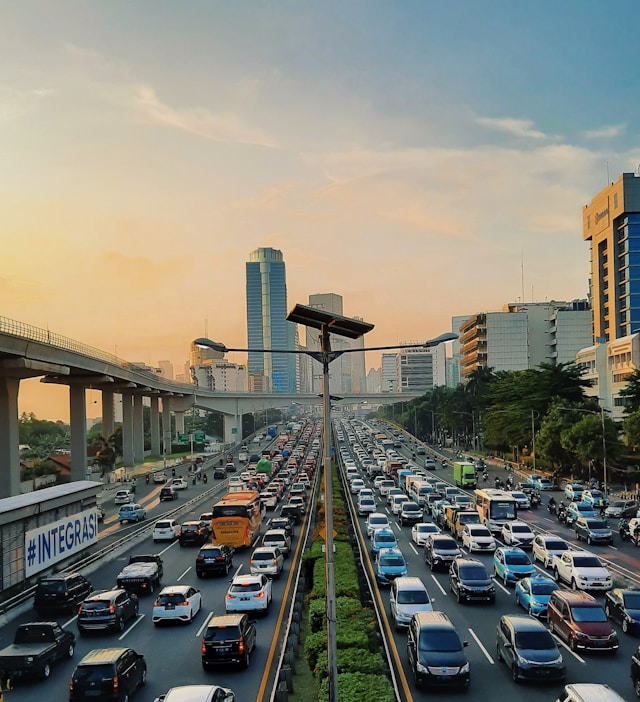In the last decade, the concept of self-driving cars has evolved from a sci-fi fantasy to a rapidly advancing reality. The technological push toward autonomous vehicles (AVs) has transformed the way society perceives transportation, prompting governments, automakers, tech giants, and consumers to rethink mobility. Autonomous vehicles are no longer limited to experimental prototypes—they are increasingly being integrated into real-world environments with promising results.
This comprehensive guide delves into the world of autonomous vehicles, examining the current state of the industry, technological innovations, regulatory frameworks, and the societal implications of transitioning to driverless mobility. As we stand on the cusp of a transport revolution, it becomes imperative to understand what lies beyond the wheel.
The Building Blocks of Autonomous Vehicles
Autonomous vehicles rely on a combination of advanced technologies that work together to emulate human driving behavior. Core components include sensors (LiDAR, radar, cameras), machine learning algorithms, onboard computing power, and vehicle-to-everything (V2X) communication systems. These components work in harmony to detect road conditions, interpret traffic signals, identify pedestrians, and make split-second decisions.
LiDAR, or Light Detection and Ranging, is often referred to as the eyes of autonomous vehicles. It uses lasers to map the environment in 3D, creating highly accurate digital representations of surroundings. Radar, on the other hand, is used to detect objects in poor visibility conditions. When combined with high-resolution cameras, these technologies provide a comprehensive, real-time understanding of the driving environment.
Artificial Intelligence (AI) serves as the brain behind autonomous vehicles. Through deep learning and neural networks, AI systems are trained on massive datasets of driving scenarios to predict outcomes and make intelligent decisions. Over time, these systems become more adept at handling complex driving conditions such as unpredictable human behavior and changing weather.
Levels of Autonomy: A Structured Spectrum
The Society of Automotive Engineers (SAE) has defined six levels of driving automation, ranging from Level 0 (no automation) to Level 5 (full automation). Understanding these levels helps clarify the current capabilities of AVs and the journey ahead.
Level 1 and Level 2 represent partial automation. Most modern cars with features like adaptive cruise control and lane-keeping assistance fall under these categories. Level 3 introduces conditional automation, where the vehicle can perform driving tasks under certain conditions, but a human must be ready to intervene. Level 4 vehicles can operate autonomously in specific environments (e.g., urban areas) without human input. Level 5 represents true autonomy—vehicles capable of operating in any environment, under any condition, with no driver involvement.
While Level 5 remains a long-term goal, several companies have already deployed Level 4 vehicles in controlled settings. For example, Waymo’s autonomous taxis in Arizona operate without human drivers in geo-fenced areas, demonstrating the feasibility of high-level autonomy.
Major Players in the Autonomous Vehicle Industry
The race to dominate the autonomous vehicle space has attracted a wide range of players from traditional automotive manufacturers to tech startups. Tesla, known for its semi-autonomous Autopilot system, continues to refine its full self-driving (FSD) software through over-the-air updates. Google’s Waymo, a pioneer in the space, operates one of the most advanced fleets of autonomous taxis.
Other notable entrants include General Motors’ Cruise, Apple’s secretive AV project, and Chinese tech giants like Baidu, which are investing heavily in robotaxi services. These companies are backed by substantial funding and are conducting real-world tests to fine-tune their technology.
Collaboration is also a significant trend in the industry. Automakers are partnering with AI firms, mapping companies, and telecommunications providers to build robust autonomous ecosystems. The ultimate goal is to create safe, efficient, and scalable AV platforms capable of transforming global transportation.
Regulatory Landscape and Government Involvement
As autonomous vehicles inch closer to mainstream adoption, regulatory bodies worldwide face the challenge of crafting policies that promote innovation while ensuring public safety. In the United States, the National Highway Traffic Safety Administration (NHTSA) has issued guidelines to support AV development, while individual states have varying laws regarding AV testing and deployment.
Countries like Germany, Japan, and China have also introduced regulatory frameworks to guide AV integration. For instance, Germany has legalized Level 4 autonomous driving under specific conditions, while China’s Ministry of Transport has set up pilot zones for AV testing.
International coordination remains critical to establishing standardized safety protocols and ethical guidelines. Issues such as data privacy, liability in accidents, and cybersecurity threats are central to ongoing policy debates. Governments are also investing in smart infrastructure, including connected traffic lights and dedicated AV lanes, to facilitate seamless AV operations.
Safety and Ethical Considerations
One of the primary motivations for developing autonomous vehicles is to improve road safety. Human error is responsible for over 90% of traffic accidents. By eliminating distracted, impaired, or reckless driving, AVs have the potential to drastically reduce fatalities and injuries.
However, AV safety extends beyond technical capabilities. Ethical dilemmas, such as how an AV should respond in a no-win scenario (e.g., the classic trolley problem), remain unsolved. These decisions involve complex trade-offs and require a balance between programming logic and societal values.
Cybersecurity is another critical concern. As AVs become more connected, they also become vulnerable to hacking. Robust encryption, multi-layered security systems, and constant monitoring are essential to protect both the vehicle and its passengers from malicious threats.
Economic Impact and Job Disruption
The rise of autonomous vehicles is poised to reshape the global economy. On one hand, AVs can improve productivity by freeing up time spent driving, reduce logistics costs, and spur innovation in fields like mobility-as-a-service (MaaS). On the other hand, they pose a threat to millions of jobs tied to driving—truckers, taxi drivers, delivery personnel, and others.
Economists predict a gradual transition rather than an overnight shift. As AV technology matures, new jobs will emerge in AV maintenance, software development, data analysis, and cybersecurity. Policymakers must focus on workforce retraining and education programs to help displaced workers adapt to the new mobility landscape.
The real estate and insurance sectors may also see significant changes. For example, reduced parking demand could free up urban space for redevelopment, while insurers will need to develop new models to assess AV-related risks.
Urban Mobility and Smart Cities

Autonomous vehicles are integral to the vision of future smart cities. Integrated with Internet of Things (IoT) infrastructure, AVs can help reduce traffic congestion, optimize public transport, and lower greenhouse gas emissions. Shared autonomous shuttles and robotaxis could replace private cars, leading to more efficient and sustainable urban transport systems.
Cities like Singapore, Dubai, and Helsinki are actively exploring AV integration. Pilot programs for autonomous buses and last-mile delivery robots are already underway. These initiatives aim to create interconnected, intelligent transportation networks that prioritize convenience, accessibility, and environmental responsibility.
Smart city planning must consider how AVs interact with pedestrians, cyclists, and traditional vehicles. Urban design will increasingly factor in AV-specific needs, such as drop-off zones, recharging stations, and communication hubs.
Environmental Impacts of Autonomous Vehicles
The environmental implications of autonomous vehicles depend heavily on their energy sources. When powered by electricity from renewable sources, AVs can contribute to substantial reductions in carbon emissions and air pollution. However, if powered by fossil fuels or deployed inefficiently (e.g., increased empty miles), they may offset some environmental gains.
AVs can support sustainability by optimizing driving patterns, reducing idling time, and encouraging car-sharing models. Fleet operators can use real-time data to manage vehicle routes efficiently, thereby lowering fuel consumption and wear-and-tear.
Nevertheless, the manufacturing and disposal of AV components, particularly batteries and sensors, pose sustainability challenges. Innovations in recycling and circular economy practices will be essential to minimize the ecological footprint of autonomous mobility.
Public Perception and Cultural Shifts
Public acceptance plays a pivotal role in the widespread adoption of autonomous vehicles. While many people express enthusiasm about the convenience and safety benefits, others remain skeptical due to high-profile accidents and lack of trust in machines.
Consumer education, transparent communication, and real-world exposure are critical to building confidence in AV technology. Demonstration projects, interactive simulations, and community engagement can help demystify AV operations and address concerns.
Culturally, the concept of car ownership may evolve. AVs enable mobility-on-demand services, reducing the need for personal vehicles. This shift may lead to changes in lifestyle, urban planning, and even social interactions, as the car becomes more than just a means of transport—it becomes a mobile experience platform.
The Road Ahead: Challenges and Opportunities
Despite remarkable progress, several hurdles remain before autonomous vehicles achieve mainstream adoption. These include technical limitations (e.g., handling complex urban environments), legal uncertainties, high development costs, and infrastructure readiness.
However, the opportunities are vast. Autonomous vehicles have the potential to revolutionize transportation, improve road safety, reduce environmental impact, and enhance mobility for the elderly and disabled. The key lies in responsible innovation, inclusive policy-making, and sustained collaboration among stakeholders.
As we journey beyond the wheel, the future of autonomous vehicles promises a transformative shift that extends far beyond the road. It offers a vision of mobility that is safer, smarter, and more sustainable—for everyone.
A New Era of Mobility
Autonomous vehicles represent one of the most exciting and disruptive advancements in modern transportation. As we stand at the threshold of a new era, it is essential to navigate this transformation thoughtfully. By embracing technology while addressing its challenges, we can unlock the full potential of autonomous mobility.
From city streets to highways, the road ahead is changing. And with it, so is the way we move, live, and connect. The journey toward fully autonomous vehicles is far from over—but the destination promises to redefine the very essence of mobility in the 21st century.

